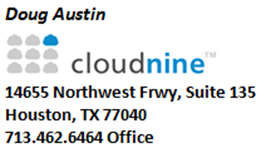Cyber Liability Insurance Policies are Becoming More Popular for Law Firms: eDiscovery Trends

Last Friday, we discussed a report in The New York Times that discussed the unwillingness of most big US law firms to discuss or even acknowledge data breaches. But, despite the unwillingness to disclose breach information, more and more law firms are apparently purchasing or considering the purchase of cyber liability insurance to protect against potential data breaches.
An article in ABA Journal from earlier this month (Cyber liability insurance is an increasingly popular, almost necessary choice for law firms, by David L. Hudson, Jr.) reported the increasing trend.
“We’ve seen a noticeable increase in the number of firms who have purchased separate cyber policies over the past 24 months,” said Chris Andrews, vice president of professional liability at AIG. “We’re probably not yet at the point where we can say it’s a common purchase, but it’s certainly trending in that direction. Many firms are consulting their clients on privacy and regulatory issues, and at the same time those clients are now asking questions as to how firms use, store and protect information. Given this heightened level of awareness, it makes sense that firms are now looking inward to make sure their own house is in order and cyber coverage is part of the solution.”
Given the fact that many law firms hold sensitive data for their clients, such as personal injury firms which take credit card payments from clients and firms handling medical-malpractice cases who could have personal health information (which is particularly valuable), those firms are prime targets for hackers.
“Law firms today are responsible for massive amounts of electronic and nonelectronic information,” said AIG’s Andrews. “Depending on a firm’s areas of practice, this information can range from personally identifiable information to protected health information to confidential corporate information, such as intellectual property, contracts, and details on mergers and acquisitions. This information represents significant liability exposure in the event of a security failure. Even if the failure doesn’t lead to an actual lawsuit, a firm may still need to deal with costs associated with notification, possible regulatory investigations, fines and penalties, forensic expenses, public relations expenses and more.”
Cyber risk policies were introduced in the 1990s but have experienced a dramatic growth in recent years, according to Washington, D.C.-based attorney Thomas H. Bentz Jr., head of Holland & Knight’s team on directors and officers and management liability insurance. “Corporate America has seen a huge increase in the purchase of cyber policies in the last three to five years. Law firms have been slower to follow,” Bentz says. “In my experience, it is still not common for law firms to purchase cyber liability coverage. I expect that this will change in the next several years as the potential exposure becomes clearer and the coverage more certain.”
Cyber liability insurance can coverage can include data breaches and privacy crisis management, as well as multimedia, extortion, and network security liability. Like, with any insurance policies, it’s important to understand the parameters of the policy and also what you can do to not only reduce the risk of a breach, but also the cost for the policy premium. For example, it’s important to understand security controls you can put into place that will reduce the premium, will you get a reduction for each year you do not file a claim and if you do file a claim, how will that affect your premiums.
So, what do you think? Does your organization have, or is considering, a cyber liability insurance policy? Please share any comments you might have or if you’d like to know more about a particular topic.
Disclaimer: The views represented herein are exclusively the views of the author, and do not necessarily represent the views held by CloudNine. eDiscoveryDaily is made available by CloudNine solely for educational purposes to provide general information about general eDiscovery principles and not to provide specific legal advice applicable to any particular circumstance. eDiscovery Daily should not be used as a substitute for competent legal advice from a lawyer you have retained and who has agreed to represent you.








